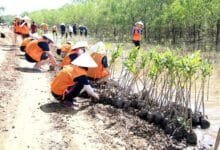
Climate change is one of the most critical challenges facing the world today. The impact of global warming is being felt in many parts of the world, with more severe floods, hurricanes, wildfires, and extreme temperature events. Climate change has also led to rising sea levels, which threaten to inundate many low-lying coastal communities. The need to develop innovative adaptation strategies and policies that can address the adverse effects of climate change has never been more urgent.
The following article will explore various innovative adaptation strategies that can be used to tackle climate change effects. We will discuss how these strategies have been implemented in different parts of the world and the impact they have had on communities.
Adaptation Strategies
1. Social Adaptation
Social adaptation involves creating adaptive capacities within communities to address the impact of climate change. This strategy involves building social networks, developing communication systems, and encouraging community participation. Social adaptation is critical in increasing resilience to climatic changes and ensuring that the community can respond effectively to climate change hazards.
Example: The Indian Ocean Tsunami Warning System
The Indian Ocean Tsunami Warning System is an example of a social adaptation strategy used to mitigate the impact of climate change. The system was established after the devastating Indian Ocean tsunami that occurred in 2004. The system provides early warning alerts and coordinates emergency response efforts to help coastal communities prepare for potential tsunamis.
1. Social Adaptation
Example: The Indian Ocean Tsunami Warning System
2. Green Infrastructure
Green infrastructure involves the use of natural systems to address the impacts of climate change. This strategy involves the use of green roofs, wetlands, green walls, and other natural systems to absorb and store water, reduce runoff, and lower temperatures. Green infrastructure is essential in reducing the impact of climate change by providing a natural solution to the problem.
Example: The Green Climate Fund
The Green Climate Fund is an example of a green infrastructure strategy used to tackle climate change. The fund provides financial support to developing countries to implement projects that prevent the emission of greenhouse gases and promote the adoption of low-carbon technologies. The fund also supports the implementation of green infrastructure projects to address the impact of climate change.
2. Green Infrastructure
Example: The Green Climate Fund
3. Technological Innovation
Technological innovation involves the development of new technologies to address the impact of climate change. This strategy involves the use of renewable energy technologies, carbon capture, and storage technologies, and advanced monitoring systems to reduce greenhouse gas emissions and mitigate the impact of climate change.
Example: The Energy Transition Act
The Energy Transition Act is an example of a technological innovation strategy used to tackle climate change. The act was passed in New Mexico in 2018 and calls for the state to transition to 100% renewable energy by 2045. The act encourages the development of renewable energy technologies, such as wind and solar power, to reduce greenhouse gas emissions and mitigate the impact of climate change.
3. Technological Innovation
Example: The Energy Transition Act
4. Community-based Adaptation
Community-based adaptation involves the development of adaptation strategies that are tailored to the needs of local communities. This strategy involves community participation in the decision-making process and the implementation of adaptation strategies. Community-based adaptation is essential in addressing the impact of climate change, as it ensures that the needs and concerns of local communities are taken into account.
Example: The Climate Adaptation Fund
The Climate Adaptation Fund is an example of a community-based adaptation strategy used to tackle climate change. The fund provides financial support to community-based projects that promote the adaptation of local communities to the impact of climate change. The fund supports projects that address the specific needs and concerns of local communities, such as water conservation, food security, and disaster preparedness.
4. Community-based Adaptation
Example: The Climate Adaptation Fund
Conclusion
Innovative adaptation strategies are essential in addressing the impact of climate change. Social adaptation, green infrastructure, technological innovation, and community-based adaptation are just a few of the many strategies that can be used to mitigate the impact of climate change. These strategies have been implemented in different parts of the world and have had a significant impact on communities. As the impact of climate change continues to grow, it is essential to continue to develop and implement innovative adaptation strategies that can address the adverse effects of global warming.
[ad_2]




